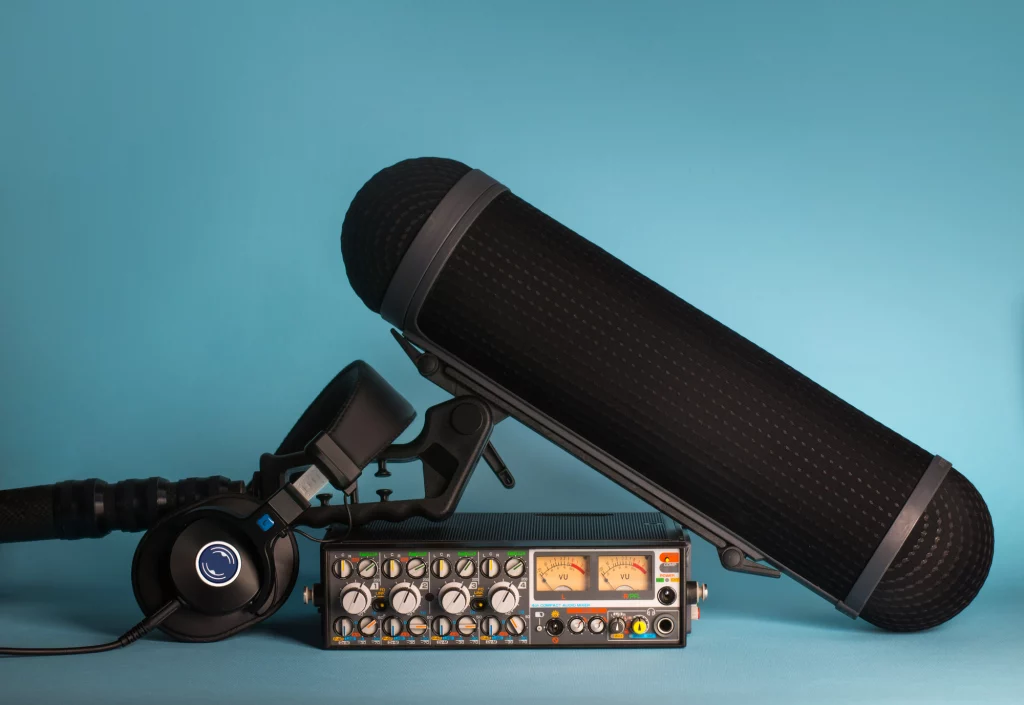Best Practices for Recording Clean Dialogue Audio

At Accentize we make smart plug-ins to help get the best possible sounding audio after the event, in post. However, we are firm believers at getting things right when recording. Accidents happen on set or in the studio, that’s when Accentize saves the day, but if you can get the best sound when recording that will save both time and headaches later on. Here’s our rough guide to the techniques and considerations that will help to achieve pristine dialogue recordings.
Environment and Acoustics
The environment is paramount in dialogue recording. Ideally, one should opt for a studio setting, purpose designed for sound recording. However, when recording in natural environments or on-location, professionals must navigate a myriad of acoustic challenges.
- Room Treatment
In studio environments, treating the room to minimise reflections and reverberations is crucial. Using acoustic panels, diffusers, and bass traps helps in controlling room acoustics. For on-location recording, portable sound blankets or gobos can be employed to dampen unwanted reflections. - External Noise Minimising external noise is a continual battle. This includes managing HVAC systems, external traffic, and other ambient sounds. In outdoor settings, strategic microphone placement and wind protection become crucial. Utilising high-pass filters can also aid in minimising low-frequency rumbles from environmental noise.
Microphone Selection and Placement
Choosing the right microphone and placing it correctly can make a significant difference.
For sit-down interviews or static dialogues, lavalier microphones offer an unobtrusive solution. However, they require careful placement to avoid clothing rustle and ensure consistent levels.
- Microphone Types
Shotgun microphones are favoured in film and television for their directionality and range. However, in controlled studio environments, large-diaphragm condenser microphones can provide a richer, more detailed sound. - Placement Techniques
The proximity and angle of the microphone to the speaker are vital. A common technique is to position the microphone just out of frame, above the actor's head, angled towards the mouth. This placement reduces the risk of capturing plosives while maintaining vocal clarity.
For sit-down interviews or static dialogues, lavalier microphones offer an unobtrusive solution. However, they require careful placement to avoid clothing rustle and ensure consistent levels.
Recording Techniques
- Gain Staging
Proper gain staging is essential to avoid noise and distortion. Setting levels so that the dialogue peaks around -12 dBFS ensures headroom for dynamic range without risking clipping. - Consistency
Maintaining consistent audio levels and tonality across takes and scenes is vital. This consistency aids in the post-production process, making editing and mixing more seamless. - Backup Recording
Always, whenever possible, record a backup track at a lower level to safeguard against clipping in the primary track. Some recorders now offer a 32bit fp option which theoretically stops clipping, however this is only in the digital domain. Clipping can still occur at the microphone stage, only a backup using a lower gain stage can reduce the probability of that happening.
The Human Element
While gear and techniques are crucial, the human aspect of dialogue recording cannot be understated.
- Communication and Direction
Clear communication with actors and directors ensures that technical requirements do not impede performance. Providing actors with the right cues and understanding their movement patterns can significantly influence microphone placement and recording quality. - Listening and Adaptation
An experienced ear is vital. Continuously monitoring the audio and being ready to adapt to changing scenarios is part of the art. This could mean adjusting microphone placement, altering gain levels, or even changing the recording environment.
The Importance of Pre-production and Planning
Pre-production is often overlooked but is integral to successful dialogue recording.
- Location Scouting
Visiting and assessing locations in advance can provide insights into potential challenges, allowing for preemptive solutions. - Script Analysis
Understanding the script and the dynamics of dialogue within scenes assists in planning the technical setup and microphone placements.
The Wrap
Recording clean dialogue is a sophisticated blend of technical prowess, creative insight, and practical problem-solving. By focusing on these best practices, audio professionals can elevate their craft, ensuring that the dialogue they capture is not just heard, but felt, conveying the full depth and nuance of the performance.
As we said at the outset of this article, we don’t always have perfect settings, performances, or equipment and are presented with less than ideal audio to mix. This is where Accentize plug-ins can save the day.
Download a free demo today to try them and see why so many top professionals depend on Accentize.
As we said at the outset of this article, we don’t always have perfect settings, performances, or equipment and are presented with less than ideal audio to mix. This is where Accentize plug-ins can save the day.
Download a free demo today to try them and see why so many top professionals depend on Accentize.

